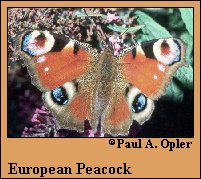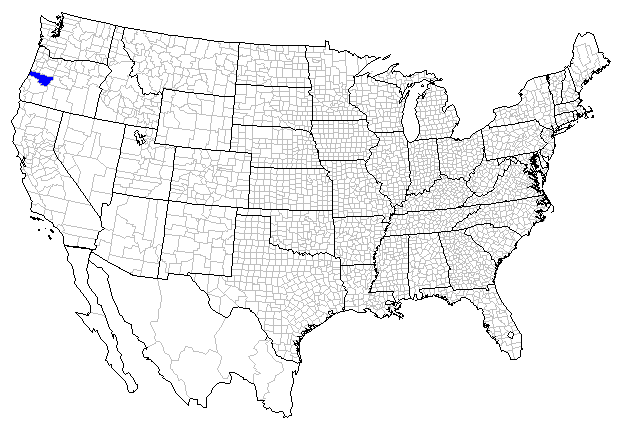 |
 

 |



European Peacock (Inachis io [Linnaeus])
Wing span: 2 - 2 ½ inches (5.1-6.4 cm).
Identification: Unmistakable. Chocolate brown above with blue peacock eye-spot on each wing. Below mottled brown-black like a tortoiseshell.
Life history: Males perch to await females. After mating, females lay batches of eggs on leaves or stems of stinging nettle (Urtica). Larvae feed in late spring and early summer. Adults emerge in summer and overwinter until the following spring.
Flight: July-May.
Caterpillar hosts: Stinging nettle.
Adult food: Sap flows, rotting fruits, dung, and flower nectar including butterflybush, yellow composites, bramble, and thistles.
Habitat: Various woodlands and gardens.
Range: Temperate Eurasia. Rare stray or transport to North America.
Conservation: Not needed for rare vagrant.
The Nature Conservancy Global Rank: G5
Management needs: None needed.
References:
Higgins, L.G. and N.D. Riley. 1970. A field guide to the butterflies of Britain
and Europe. Houghton Mifflin Co., Boston.369 pages.
Hinchliff, John. 1994. The distribution of the butterflies of Oregon. Oregon
State University Bookstore, Corvallis. 176 pages, map.
Thomas, J.A., 1992. Butterflies of the British Isles. Hamlyn Press, London.
160 pp.
Author: Paul A. Opler

